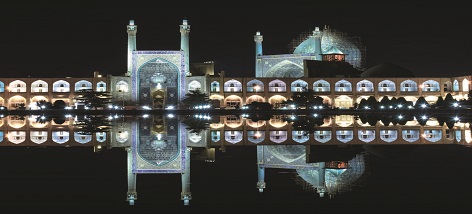
What are the sources of state strength in the Islamic Republic of Iran? This is the central question that animates this book. The current Iranian state, established in the aftermath of the 1978-1979 revolution, has proven remarkably resilient in the face of multiple challenges from within and from the outside. Some of these challenges have been more threatening than others, like the invasion of the country by the far more superior and better organized Iraqi forces in September 1980, or Donald Trump’s “maximum pressure” campaign from 2017 to 2021. Other challenges, like the many protests that erupt periodically in cities big and small across the country, have been dealt with harshly and relatively easily and quickly. Institutionally also, there are multiple contradictions within the system that undermine its efficacy and internal operations. But the Islamic system has persevered through it all. It hasn’t necessarily thrived, except perhaps by the accounts of some of its diehard supporters, but neither has it come anywhere near the collapse or the grinding halt that its detractors have prognosticated for the last four decades. The answer as to why and how the system has persevered, despite its many self-inflicted wounds and those caused by its enemies, is what this book explores.
Despite consistently high voter turn-outs and popular excitement in its presidential elections, the Iranian political system continues to experience diminishing political legitimacy. Scattered, spontaneous eruption of protests and other manifestations of mass anger in different parts of the country have become common occurrences, and slogans denouncing the state’s highest figures are heard frequently. In the meanwhile, the political system, unable to meet some of the most basic demands of the urban middle classes, has lost any semblance of ideological cohesion it once had, resulting in the continued proliferation of factions and factional alignments. All of this is taking place at a time of unrelenting international pressure and the re-imposition of punishing sanctions by the United States.
To stay in power, the state relies on four primary pillars of power. They include first an elaborate and highly complex institutional set-up that enable its penetration into the inner reaches of society and its mobilization of supporters. Second, a “deep state,” mainly comprised of the Qom-based theological establishment and the paramilitary forces, ensures the interests and longevity of the system’s core political principles and institutions. Third, intra-elite dynamics, revolving mostly around ideological factures and factional politics, ultimately ensure elite circulation and system perseverance. Fourth and finally, the state enables institutional rent-seeking through its own practices and its very institutional set-up, thus ameliorating some economic pressures on the middle classes while ensuring their continued dependence. Together, these four pillars ensure the survival of the Islamic Republic state despite relentless pressures on it from within and from the outside.
The Islamic Republic state, ultimately, is on firm grounds. It is neither agile nor necessarily proficient in its declared tasks. And it is far from being widely popular among its subjects. In fact, a credible argument can be made that the Iranian state is its own worst enemy, never missing an opportunity to alienate more of its people from its orbit through myopia and inflexibility. But the politics of puttering along, rooted in the state’s institutional design and its ideological anchors, have so far served the purposes of state survivability quite well.
Latest Comments
Have your say!